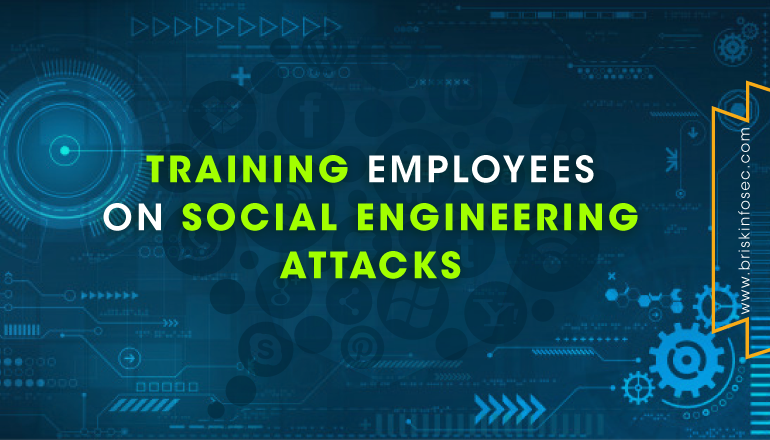Contents
- Introduction
- Is it really necessary to educate employees against social engineering attacks?
- Types of social engineering attacks
- How to test and train your employees
- Conclusion
Introduction
“Amateurs Hack Systems, Professionals Hack People” According to this saying, Social Engineering is a security term that may be mostly heard around in corporate offices. This attack involves interactions with the users to get confidential information. But, do you really think everyone at your company know what it really means? In this blog we are going to discuss on some of the social engineering attacks and ways to get rid from these attacks.
Is it really necessary to educate employees against social engineering attacks?
Basically an attacker needs good communication and a little technical knowledge which would lead to loss in millions. Most of the employees may not be aware of this attack but these would end up in data loss, reputation loss and monetary loss. So, an organization should educate the employees regarding the importance of data and ways to keep it secured. Due to lack of awareness most of the employees share their corporate details to third party or to their colleagues which would lead to social engineering attack. By educating the employees data loss can be avoided to an extent and they will be aware of the social engineering tricks and do’s and dont’s of the organization data
Types of social engineering attacks
These attacks are difficult to identify, the following is a brief about the types of social engineering attacks,
Phishing
It is one of the most common type of attack in which victims are targeted by emails and telephones. Phishing attacks are used to deceive victims by sending malicious mail requesting to update their office passwords in their given link. Some of the email may contain malicious documents. Their email domains may look as legitimate. Some of the phishing attacks are spear phishing, whaling, clone phishing etc. According to Symantec Internet Security Threat report released in 2019, 65% of attacker groups used spear phishing as the primary infection vector and 48% of malicious email attachments were office files. Email scams—which are cheap, quick, and easy to customize—are a large part of the problem. It is simple for an attacker to produce a phishing email that looks convincingly like it is from a trusted source, coaxing a targeted user into clicking links, downloading files, or divulging private information. It is also difficult to trace such attacks, and it is equally difficult to prevent them without proper user education. In the worst-case scenarios, these slip-ups can lead to the propagation of malware on the network.
Tailgating
Tailgating is a technique, in which a person gains unwanted entrance into a facility by using tricks and tactics to fool the employees of that company.
Pretexting
Pretexting is a form of social engineering attack where the attacker focus on creating a good pretext. For example, an attacker might impersonate an external IT service engineer so that they can talk about a target company’s physical security team to let them into the building.
Baiting
Baiting is a technique which targets the employees' curiosity. An attackers use a malicious file disguised as software update or as generic software. An attacker can also power a baiting attack in the physical world, for example, disseminating infected USBs tokens in the parking lot of a target organization and wait for internal personnel to insert them in the corporate PC. Attackers deceive employees by promising a service or benefit based on the execution of the attack.
Click here to more about our Cyber Security Services
How to Test and train your employee?
Training employees against social engineering attacks may help the company/employee to get away with the attacks. The only real way to ensure your training is working to put your employees to the test actually. These types of testing allows us to see where the employees stand and it also gives them the opportunity to get real life experiences with threats such as phishing, pre-texting, baiting etc. Many security firms organize testing for social engineering attacks and to defense those attacks. Finding the right provider to assess the security and knowledge of the employees may be difficult. You can get an overview of choosing the right security provider for your organization in this Blog.
Conclusion
We have discussed about various social engineering attacks, these attacks may be simple but in terms of impact it plays a major role. The FBI has released a public service announcement stating that between October 2013 and May 2018, the total known worldwide losses to Business Email Compromise (“BEC”) scams has now exceeded $12.5 billion. It is mandatory for all the employees to undergo social engineering training and examination for every quarter year.



